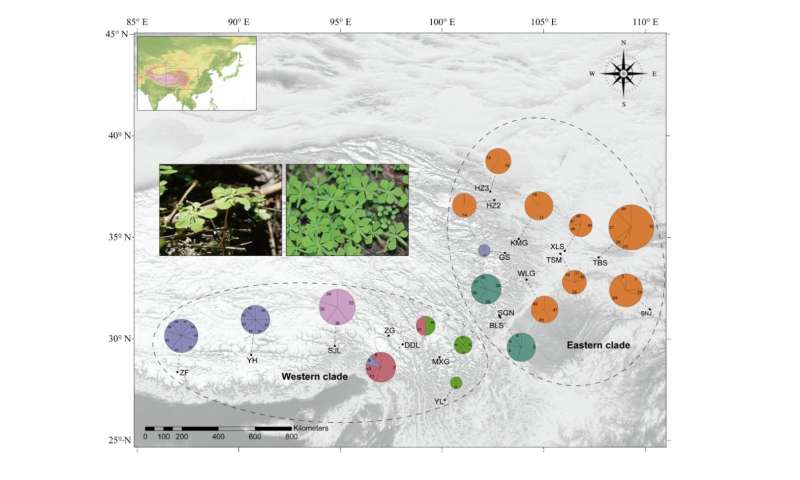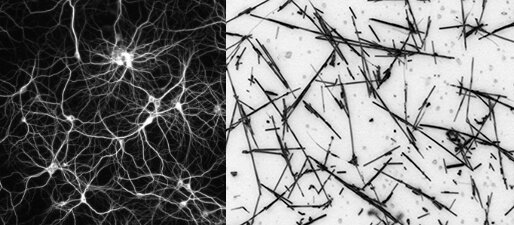#Research enlightens population genomics and adaptive evolution of ancient relictual plant
“#Research enlightens population genomics and adaptive evolution of ancient relictual plant”

The Qinghai-Tibet Plateau (QTP) is the largest and highest plateau in the world. The uplift of the QTP provides extraordinarily geomorphological and climatic diversity, promoting rapid radiation in plant lineages, while also harboring some ancient relictual taxa, such as Circaeaster, a genus contains only one species—Circaeaster agrestis.
Morphologically, C. agrestis has open dichotomous leaf venation similar to ginkgo, suggesting an ancient history of origin. C. agrestis distributes sporadically in the Himalayan and Hengduan mountains and reaches the Shennongjia forest region in the east. It has a narrow habitat and is listed as a rare and endangered plant under national key protection.
How does this Chinese endemic plant with unique morphological characteristics and vulnerable habitats survive and reproduce in nature? How does its maintenance and divergence history provide enlightenment for the protection of important resource plants in China?
The Plant Systematic and Evolution Research Group of the Wuhan Botanical Garden conducted population genomic study of C. agrestis using Restriction-site Associated DNA Sequencing (RAD-seq) technology.
The results revealed significant genetic structure with an extraordinary disequilibrium of genetic diversity among distributions of C. agrestis, and signals of isolation by geographical and niche distance. The populations were estimated to begin diverging in the late Miocene. The uplift of the Hengduan Mountains may have promoted the divergence of C. agrestis. Both environmental gradient and redundancy analyses revealed significant association between genetic variation and temperature variables.
Genome-environment association analyses identified 16 putatively adaptive loci mainly related to biotic and abiotic stress resistance, providing in-depth knowledge of genetic basis involved in local adaptation of C. agrestis.
This study gains genomic insights into the population structure and evolutionary history of ancient relicts in China, providing basic information for species conservation. It also aids efforts on developing sound conservation programs in facing of rapid changing climate.
The research was published in New Phytologist entitled “Genomic insights into adaptation to heterogeneous environments for the ancient relictual Circaeaster agrestis (Circaeasteraceae, Ranunculales)”.
More information:
Xu Zhang et al. Genomic insights into adaptation to heterogeneous environments for the ancient relictual Circaeaster agrestis (Circaeasteraceae, Ranunculales), New Phytologist (2020). DOI: 10.1111/nph.16669
Research enlightens population genomics and adaptive evolution of ancient relictual plant (2020, July 14)
retrieved 14 July 2020
from https://phys.org/news/2020-07-enlightens-population-genomics-evolution-ancient.html
This document is subject to copyright. Apart from any fair dealing for the purpose of private study or research, no
part may be reproduced without the written permission. The content is provided for information purposes only.
If you want to read more Like this articles, you can visit our Science category.
if you want to watch Movies or Tv Shows go to Dizi.BuradaBiliyorum.Com for forums sites go to Forum.BuradaBiliyorum.Com



